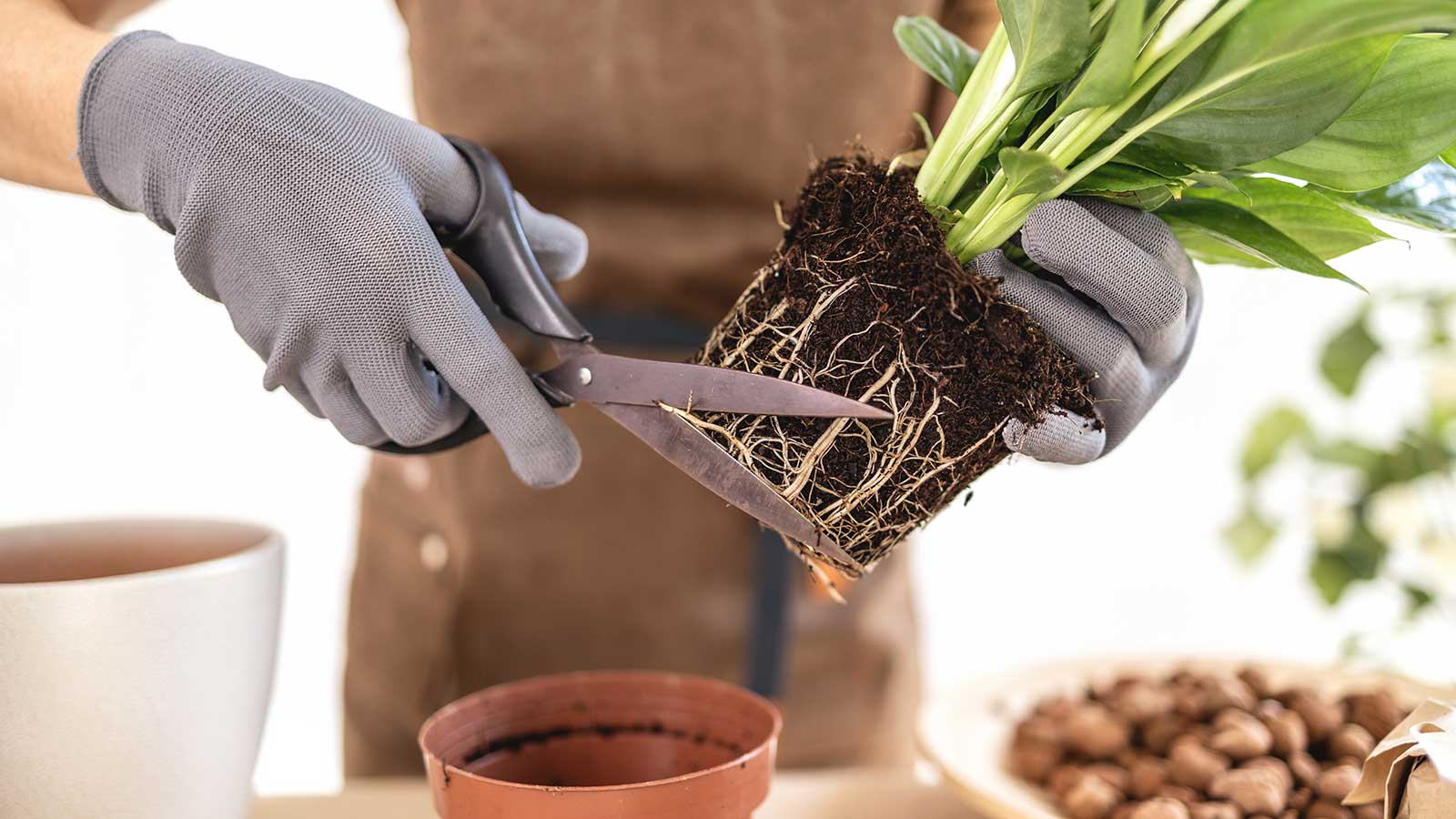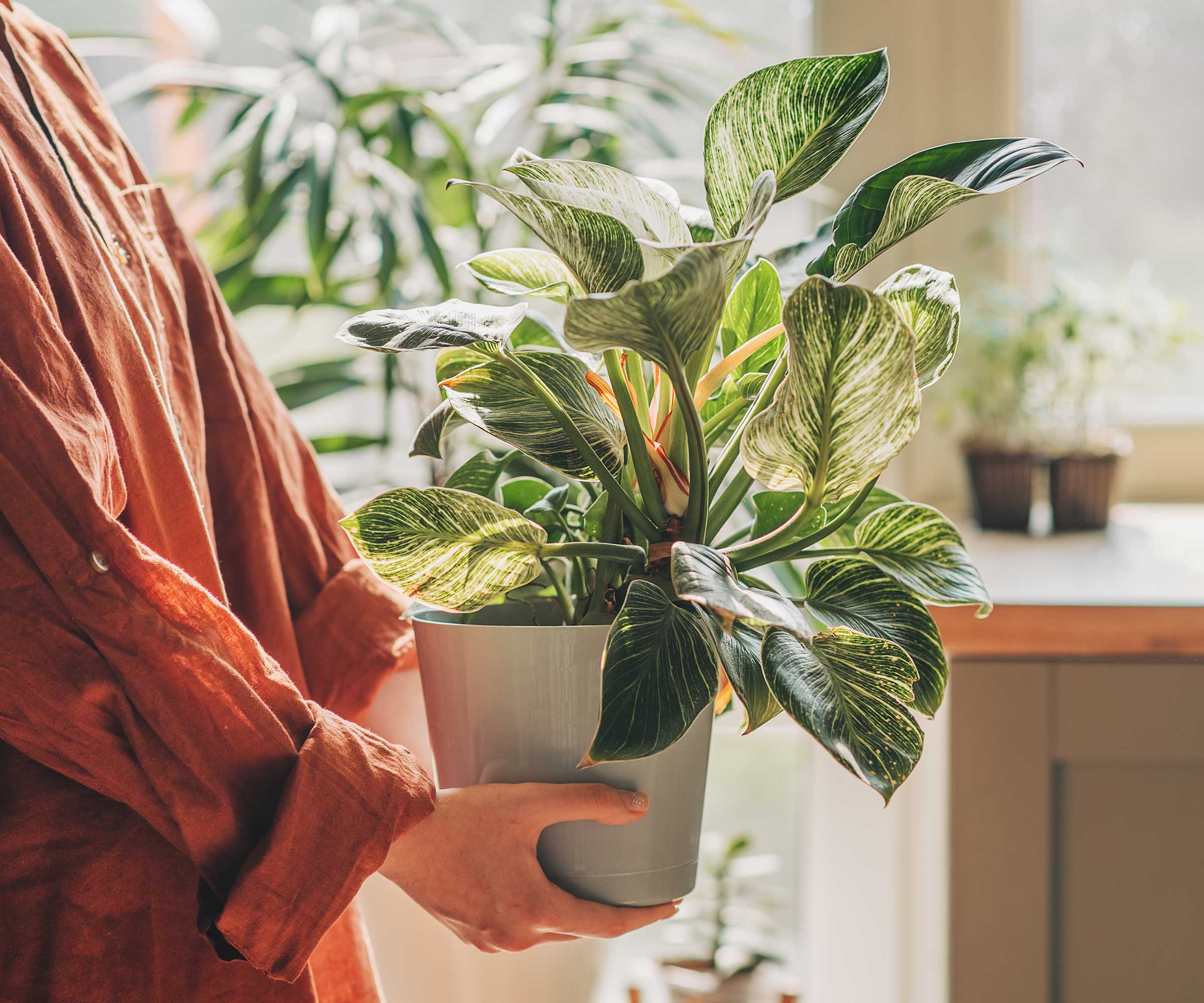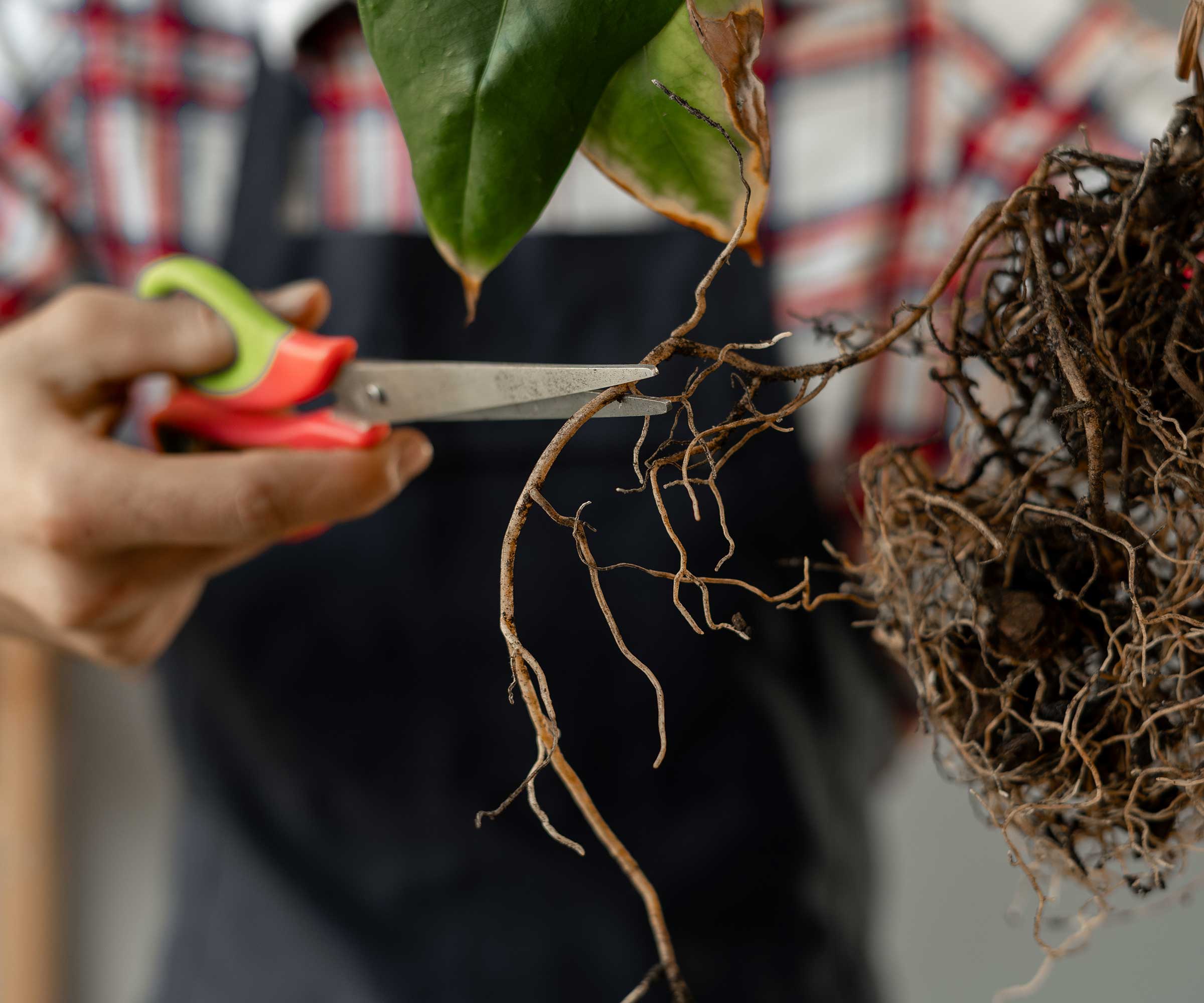
Pruning houseplant roots may sound like an unfamiliar thing to do, but it can have serious benefits. There are two key times you may need to do this: when plants have developed congested roots, and when they are suffering from root rot.
With old or fast-growing indoor plants, the roots can grow so much that they actually take up all of the space in their container, explains Diane Kuthy, the founder of How To Grow Everything. ‘This is called being "root bound" and it's a serious condition that can cause stunted growth and, eventually, the death of the plant.’
You can simply repot the plant into a bigger container at this stage. However, this will encourage the plant to grow larger. If you want to keep it compact, the alternative solution is to trim the roots so it can continue to thrive in the existing container, Diane says. ‘Both options are viable and it depends on the grower's personal preference.’
Root rot, on the other hand, is caused by waterlogged soil, often a result of overwatering. In this case, damaged roots can be cut away to try and save the plant and bring it back to full health.

How to prune houseplant roots – an expert guide
Below, the houseplant experts share their tips for carrying out this task on your indoor plants.
What to look for before you prune houseplant roots

Be sure your plant is actually root-bound before pruning its roots, says Diane. 'Otherwise, you may remove too much of a healthy root system and cause stress to the plant.
'A root-bound plant will show signs of stress and have a very dense and tightly bound root ball with almost no loose soil,' she continues. It may need watering more frequently than usual, and roots are likely to be pushing through the drainage holes, too.
If you're wondering whether you need to fix an overwatered plant by trimming the roots, look for the telltale signs of root rot. These include mushy stems, stunted growth, and yellow leaves. Once you remove it from its pot, the rotten roots will be soft, brown or black, and may smell bad. These are the areas to remove.
How to prune houseplant roots in 5 simple steps

Pruning houseplant roots is super easy. However, it’s best to do this job outside or over a tarp, notes Diane. This will make it easier to clean up afterward.
This popular tarp from Amazon is perfect for the job.
- Gently remove the entire root ball from the container – soil and all, Diane instructs. Instead of pulling the plant from its top, tip the pot onto its side and gently wiggle the plant at the base to release the root mass, she advises.
- ‘Once your plant is free from its container, you'll want to use your hand to dust off as much soil from around the bottom 25% of the plant,’ Diane continues. ‘This will give you a clear view of the root system.’ If possible, try to untangle the roots slightly.
- Next, it’s time to trim the roots. 'Make cuts just above root branching points, never removing more than one-third of living roots at once,' advises Kiersten Rankel, an expert from Greg, a houseplant-care app.
- ‘Your next step is to loosen up the roots from the remaining root ball,’ says Diane. ‘This will help your roots to spread out when placed into the new soil.’
- ‘Once loosened, add fresh new potting soil to your container, place the plant into that new soil, then top it off with additional soil,’ Diane says. Then, give it a water. 'New hair-like feeder roots will grow from cut ends,' Kiersten says.
FAQs
What are the best tools to use to prune houseplant roots?
'Use a sharp, clean knife, snips, or a hori hori tool so cuts are smooth – not crushed or torn,' says Kiersten Rankel, a houseplant expert from Greg.
Pruners, such as these Fiskars bypass pruners available at Amazon, could also be used.
'Sterilize tools between plants with diluted bleach to prevent disease spread,' Kiersten advises.
‘You can use your hand to loosen up the root ball, but if the root ball is particularly stubborn you can use a pronged hand cultivator instead,’ Diane adds.
What time of year should you prune houseplant roots?
'The best time for root pruning is early spring, at the beginning of the growing season, when plants can recover fastest,' says Kiersten Rankel, a houseplant expert from Greg. Pruning the leaves and stems of houseplants should generally be carried out at this time, too.
However, if your plant is suffering from root rot, do it as soon as you can, to try and prevent the spread.
Are there any plants you should avoid pruning the roots of?
Diane Kuthy, the founder of How To Grow Everything, warns against pruning the roots of cacti, succulents, tubers, rhizomes, bulbs, and plants that have very shallow root systems. ‘You can easily destroy their delicate root systems and cause plant death. Instead, if you feel these plants have outgrown their containers, simply repot them in a larger container to allow more space for their root systems to grow.’
However, if they're suffering from root rot, removing the diseased sections is worth a try – it may even save your houseplants. You may wish to try propagating your succulents from healthy leaf cuttings, too, for backup plants.
Root pruning is just one job that can help your plants reach their full growing potential. Remember to keep an eye out for houseplant pests, protect them from central heating, and keep them well-watered when you're away on vacation, too.







